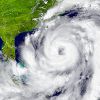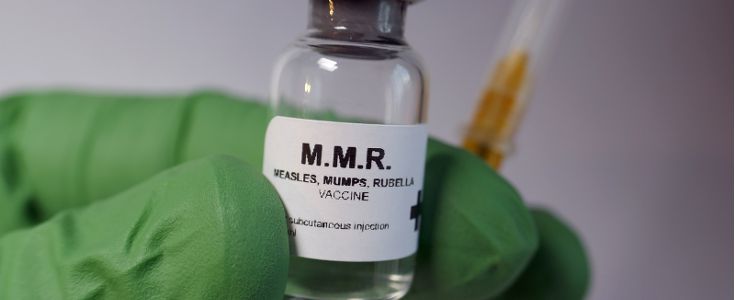Every communication product and project should include some combination of the following steps. As a way of introducing the tasks and skills involved in creating health communication products, MastersinCommunications.com interviewed professionals in the field regarding a project they were involved in. In this case study, we spoke with communication specialists in both rural and urban areas to understand the different types of responses to measles outbreaks, and focused on the actions taken in the rural community.
Background
Before the measles vaccination became available in the U.S., nearly every child was infected. The Center for Disease Control (CDC) estimates that between 3 and 4 million people were infected each year, with around 400 to 500 deaths from this contagious viral disease of the respiratory system. The vaccination became available in 1963 and rates dropped steadily until it was declared eliminated in 2000. However, due to the anti-vaccine movement started by some parents, the disease became viable again, and in the decade between 2004 and 2014, the CDC reported an increase in measles cases in the U.S. from less than 50 to over 600 cases per year.
When the vaccine was introduced to the public in the 1960s, public service announcements (PSAs) on television and radio were the primary form of public education. Medical doctors, primarily family practice providers, served as a complementary form of health communication by speaking directly with parents. After the renewed viability of the disease in the U.S., state and local health departments became responsible for disseminating information to the public during an outbreak regarding the risks and management of the illness. While news media may serve as additional sources of information by running stories that inform the public, they are not always as comprehensive or reliable as the information that comes directly from health communication professionals in the government agencies responsible for both alerting and informing the public as well as tracking the disease..
Identify Goals, Audience, and Scope
When a small measles outbreak hit a county in rural Montana, the medical providers in the area informed the county health department. Unlike a larger organization in an urban or suburban setting, the staff in a rural area tend to wear many hats. In this case, the Director and Assistant Director of the Community Health Department went to their emergency response plan and began work on their assigned roles. Their goals were to reach out to the community to inform them of the outbreak, steps to take to protect themselves from the disease, and strategies to take if they were infected. They focused on informing local and regional health care providers; local, regional, and state news outlets; local organizations such as churches and granges; and state officials.
Strategy, Planning, Content, and Distribution
Every local community in the U.S. has a variety of emergency response communication plans, ranging from floods and power outages to disease and terrorism. The plans that impact the health of the community are developed in consultation with federal organizations such as the CDC, as well as coalitions of communication professionals such as the National Public Health Information Coalition (NPHIC). These organizations take on the burden of collecting research data and statistics on a national and statewide basis, and provide templates for printed materials, news releases, social media messages, and website content. The local health departments then customize it for their community’s needs.
In the case of an area with low population density and high interpersonal connectivity, people who were most at risk can be targeted directly. For example, medical providers were provided with key messages and fact sheets to offer all pregnant patients in the area, as well as families with children who had not yet been vaccinated. Additionally, community meetings were set up at the community church and grange with invitations disseminated via local newspapers and radio. Short presentations were given by the health department staff, including an extensive Q&A period, and printed materials were made available.
While urban and suburban areas can rely on social media such as Facebook, Twitter, or Instagram accounts to spread information quickly, rural areas are less likely to use this approach. Many rural areas have poor access to high speed internet, and their social media use is much lower than other population centers.
PSAs were developed in collaboration with state agencies to inform people in the affected region, and press releases were sent to all newspapers, radio, and television outlets around the state. After the initial flurry of information was released, regular updates were provided on the county website and radio interviews were arranged with local media.
Evaluation of Product Effectiveness
After an outbreak of any infectious disease, the usual protocol is to meet with all relevant partners and stakeholders to evaluate the effectiveness of the communication plan. In this case, the health department held a public meeting to get feedback from the community, as well as conferred with health care providers and state agency partners.
Conclusion
Professionals who focus on health and risk communication serve their communities by providing information to the public and to responders so they can make the best possible decisions to keep themselves and their families safe and healthy. Part of their responsibility is to focus on preparation, which includes education about potential issues that are relevant in their area. For example, while hurricane preparation would not be useful in the Midwest portion of the U.S., it is extremely relevant in Florida. Another aspect of their job is to respond to immediate crises using communication plans developed, approved, and updated as necessary. Finally, it is important that they also take the time to evaluate the effectiveness of their work, in order to understand how to better prepare and respond in the future.
Additional Health Communication Case Studies:

Manual for Cancer Patients
This case study follows the creation of a printed manual containing information on cancer treatments. The design process involved gathering data from treatment facilities, as well as finding the right layout to optimize patient experience.

Risk Communication and Social Media Campaigns
This case study details how one risk communication organization uses social media to provide up-to-date information during a natural disaster. It includes a breakdown of the strategy employed amidst such events, as well as the training involved to prepare.


